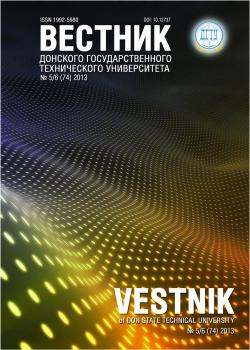The work objective is to investigate the possibility and efficiency of three-dimensional numerical models of the elastic stress fields in the deformed solids. The field point-source method (PSM) designated as the method of fundamental solutions (MFS) in the foreign literature is used to develop these models. The PSM system generation for modeling fields of different physical nature is described. The concept of a point source of the elastic displacement field in the deformed solid is introduced. The research result is a developed PSM equations system that can be applied for solving three-dimensional problems in the elasticity theory, including the classical first and second boundary value problems in the elasticity theory (when either the voltage or bias is set on the boundary), as well as a mixed boundary problem (when on one part of the boundary, the displacement is set, and on the other — the voltage). The PSM properties are studied when solving standard problems, and the Dirichlet problem for a circular domain. The dependences of the numerical solution error on the problem parameters, in particular, on such as the charge number simulating the desired field, the remoteness of the charges from the solution domain boundaries, are obtained. The test problem of calculating the deformation field in the ball domain is solved. Upon the results obtained, the following conclusion is made. In the numerical solution of three-dimensional elasticity problems, a decreasing exponential dependence of the PSM error on the square root of the simu-lating charge number is observed. This property provides a numerical solution with a very low relative error that implies the PSM application perspectiveness in the numerical solution of the elasticity problems, including three-dimensional problems.
field Point-Source method, method of fundamental solutions, elasticity problem, Dirichlet problem.
Расчет полей упругих напряжений в деформированных телах является одной из важнейших задач прикладной математики [1–3]. При численном решении этих задач, в зависимости от их особенностей, применяют различные численные методы: конечных разностей (МКР) [4], граничных элементов (МГЭ) [3]. Однако чаще других используется метод конечных элементов (МКЭ) [2], который по праву можно считать эталоном для численного решения краевых задач математической физики. Тем не менее в ряде случаев, в том числе при моделировании полей упругих напряжений в деформированных твердых телах, использование МКЭ не всегда эффективно — в частности, точность результата может оказаться ниже требуемой, особенно при решении трехмерных задач. Кроме того, при необходимости получать решение в режиме реального времени с применением МКЭ возможно недостаточное быстродействие вычислений. В указанных случаях возникает необходимость поиска численных методов, позволяющих получать более точное решение за более короткий промежуток времени. В качестве примера приведем метод точечных источников поля (МТИ) [5–9], который может использоваться для решения широкого круга задач математической физики. Его применение наиболее эффективно при решении краевых задач для уравнений эллиптического типа: уравнений Лапласа, Гельмгольца, бигармонических уравнений [8–13]. Имеются сведения об эффективности использования этого метода при решении краевых задач для уравнений параболического типа и для волновых уравнений [8, 14]. В данной статье иллюстрируется возможность применения МТИ при моделировании полей упругих напряжений в деформированных твердых телах. В отличие от статьи [15], в данной работе исследуются возможности применения МТИ при решении трехмерных задач теории упругости. Прежде всего дадим краткое описание МТИ.





